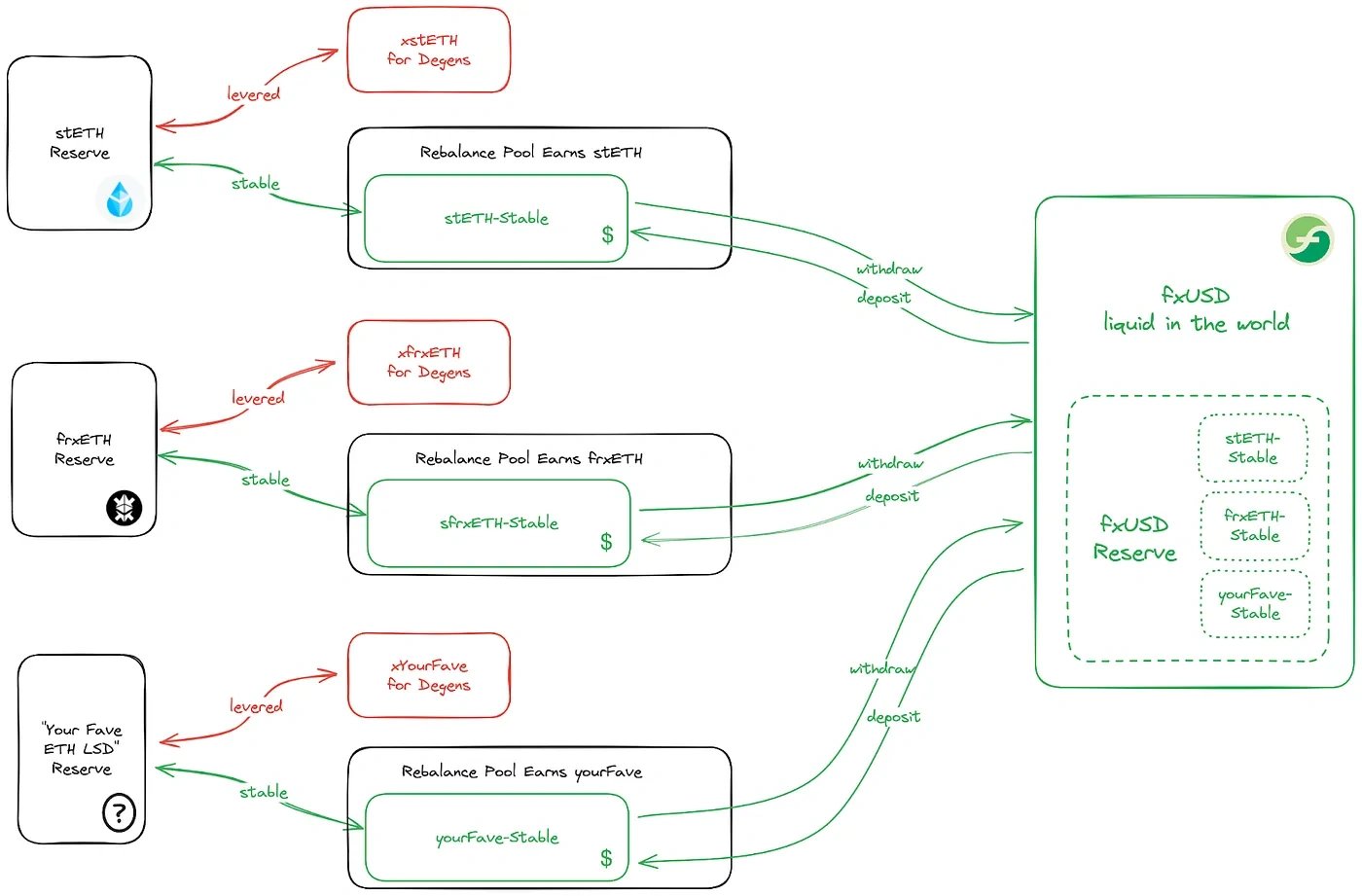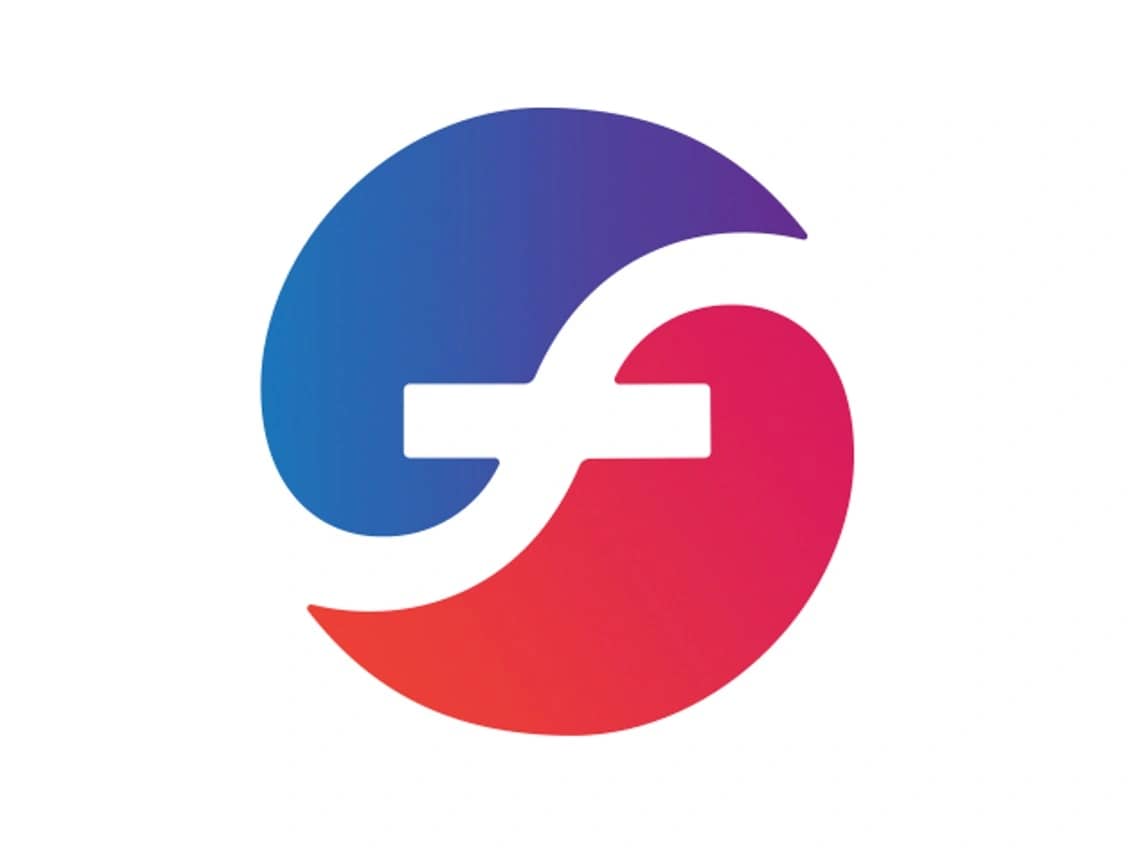Subscribe to wiki
Share wiki
Bookmark
f(x) Protocol
The Agent Tokenization Platform (ATP):Build autonomous agents with the Agent Development Kit (ADK)
f(x) Protocol
f(x) Protocol introduces two Ethereum (ETH) derivative assets: one characterized by stablecoin-like low volatility and the other representing a leveraged long ETH perpetual token. [1]
f(x) Protocol aims to generate fETH, a token with low volatility. The goals for fETH include ensuring full decentralization and integration with Ethereum's ecosystem. Additionally, fETH seeks to minimize volatility while maintaining some exposure to market movements. This token can be instantly minted and redeemed in response to stablecoin demand, offering high liquidity derived from the demand for xETH. [1]
Secondly, the protocol focuses on creating xETH, a token representing leveraged long positions in ETH. Similar to fETH, xETH is designed to be fully decentralized and integrated with Ethereum's ecosystem. It offers composability, ensuring liquidity on-chain, and has a low risk of liquidation, providing users with a secure option for leveraging their exposure to ETH price movements. [1]
Overview
The f(x) Protocol's design facilitates rapid scalability of fETH liquidity, surpassing stablecoins issued via collateralized debt positions (CDPs). This scalability is driven by the strong demand for leveraged long ETH positions (xETH), contrasting with the lower demand for CDPs, which involve maintenance and capital inefficiencies. Leveraging these demand dynamics, the protocol establishes a liquidity framework, improving accessibility and market efficiency for participants interested in ETH derivative assets. [1]
Fractional ETH (fETH)
The fETH token, or Fractional ETH, is decentralized and low-volatility, serving as an Ethereum-native asset. It does not act as a stablecoin but experiences minor value changes linked to ETH's fluctuations, set at 10% of ETH's movements. This linkage keeps fETH tied to the Ethereum economy rather than the US one, making it a potential choice for those expecting USD depreciation compared to ETH. [2]
Stability Pool
The fETH Stability Pool (stETH) enables users to stake their fETH tokens to earn returns. These returns are generated through the management of protocol collateral assets, primarily in terms of wrapped staked ETH (wstETH). When the f(x) collateral ratio falls below the stability threshold, the protocol uses fETH from the Stability Pool for liquidation transactions, raising the collateral ratio above 130%. [3]
Leveraged ETH (xETH)
The xETH token, also known as leveraged ETH, is a decentralized long ETH futures contract offering leverage with minimal risk of liquidation and no funding fees. In some cases, xETH minters can earn fees. It's used to amplify gains on a bullish outlook for ETH price growth. [4]
FXN Token
The FXN token is the governance token of f(x) Protocol token, enabling holders who lock their tokens to participate in protocol decisions. Revenue-sharing aligns interests between users and ve-token holders, incentivizing engagement in governance and fostering long-term involvement. Like other Aladdin DAO projects, FXN combines governance and revenue-sharing to promote engagement, align interests, and enhance sustainability and decentralization of the f(x) Protocol ecosystem. [5]
Tokenomics
The FXN token allocation plan sets aside 980,000 FXN tokens (49% of the maximum supply) for liquidity incentives over a 50-year period. The emission rate starts at 98,000 FXN in the first year and decreases by 10% each subsequent year. Weekly epochs occur within each year, with veFXN governance votes deciding the FXN allocation among available gauges, following a model akin to Curve's approach. [6]
FXN tokens can be ve-locked for governance power and revenue sharing. Additionally, users have the option to ve-lock FXN-ETH 80–20 LPs, consisting of 80% FXN and 20% ETH. The ve-locking process for FXN tokens and FXN LPs follows the standard ve-approach developed by Curve, where 1 FXN token or FXN LP equivalent token locked for 4 years yields 1 veFXN voting power. Users can select the locking duration ranging from 1 day to 4 years. Over time, as the remaining lock period decreases, so does the ve power. [6]
FXN Token had no team allocations, presales, or VC involvements. Tokens were issued through a mechanism similar to CLEV, termed a "capped elastic token offering." f(X) planned to raise ETH by selling FXN tokens in two rounds: The first round occurred before the beta protocol launch, with a maximum of 60,000.00 FXN tokens available for sale at a fixed price of 1 FXN = 0.005 ETH. The total supply was elastic, with the amount of FXN purchased within the offer period representing 3% of the total issuance. Users could deposit ETH to reserve their FXN during this period. The second round will commence upon the completion of the beta phase of the f(x) Protocol. Assuming the first round sells out, 40,000.00 FXN tokens will be available for sale at a price determined later. If the first round doesn't sell out, the second round token supply will be adjusted to ensure the total sale accounts for 5% of the FXN total supply. Users can deposit ETH to reserve FXN during this period, subject to the cap not being reached. The Token Generation Event (TGE) for FXN will occur after the beta mode concludes, with tokens acquired in both rounds distributed at that time. [6]
veFXN
f(x) adopts ve tokenomics, where locking FXN tokens results in receiving veFXN tokens. The longer the lock period, the greater the amount of veFXN tokens received. 75% of treasury revenue is distributed to veFXN holders, while 25% of the revenue is allocated to a reserve pool to incentivize fToken redemption and xToken minting after the exhaustion of Stability Pool capital. [7]
For each FXN locked:
- 4 years = 1 veFXN
- 3 years = 0.75 veFXN
- 2 years = 0.5 veFXN
- 1 year = 0.25 veFXN
fxUSD Stablecoin
fxUSD is a 1:1 USD-pegged stablecoin issued by f(x) Protocol. It is fully collateralized by approved crypto assets held within the protocol’s reserve, meaning each fxUSD in circulation corresponds to an equivalent dollar value of locked collateral. Individual stable positions alone are not independently redeemable; instead, fxUSD issuance and redemption occur through the protocol’s combined stability pool and reserve framework.
The reserve consists of approved “liquid staking derivative” (LSD) assets such as stETH paired with a leveraged token, and this structure enables fxUSD minting by supplying collateral from these pairs or withdrawal via the rebalance pool. Once minted, fxUSD can be transferred, used externally, deposited into a source stability pool, or redeemed for underlying collateral—provided the tokens are available in the protocol’s reserve. [8] [11]

fxUSD Reserve
fxUSD is backed 1:1 by a reserve of $1-pegged stables from whitelisted ETH LSD stable-leverage pairs, starting with stETH and frxETH. The fxUSD reserve is separate from the constituent stable-leverage pairs, so stable tokens from whitelisted pairs can exist in its Stability Pool or the fxUSD reserve, but not both. Once minted, fxUSD can be held, transferred, or used outside f(x). fxUSD can also be deposited back into one of the source stability pools or redeemed for reserve ETH LSD tokens. The availability of Stability Pool and reserve token redemption paths depends on the token makeup of the fxUSD reserve, which can vary. Since fxUSD is minted 1:1 against tokens in its reserve, every fxUSD can be redeemed for $1 worth of an ETH LSD, depending on which stables are present in the fxUSD reserve. Likewise, fxUSD can only be directly deposited to a Stability Pool if there are appropriate tokens available in the fxUSD reserve. [9]
rUSD
rUSD functions similarly to fxUSD but uses only ETH Liquid Restaking Tokens (LRT) like Ether.fi’s eETH in its reserve. Despite the differing risk profiles of LRTs compared to LSTs, restaked ETH is a suitable fit for the f(x) mechanism. Depositors in the Stability Pool can earn high restaking rewards, including points, without being exposed to ETH price changes. With 100% of reserve points and 50% of LST yields going into the rUSD Stability Pool, accruing points in this pool surpasses holding the LST itself in terms of value. [10]
See something wrong?
The Agent Tokenization Platform (ATP):Build autonomous agents with the Agent Development Kit (ADK)
